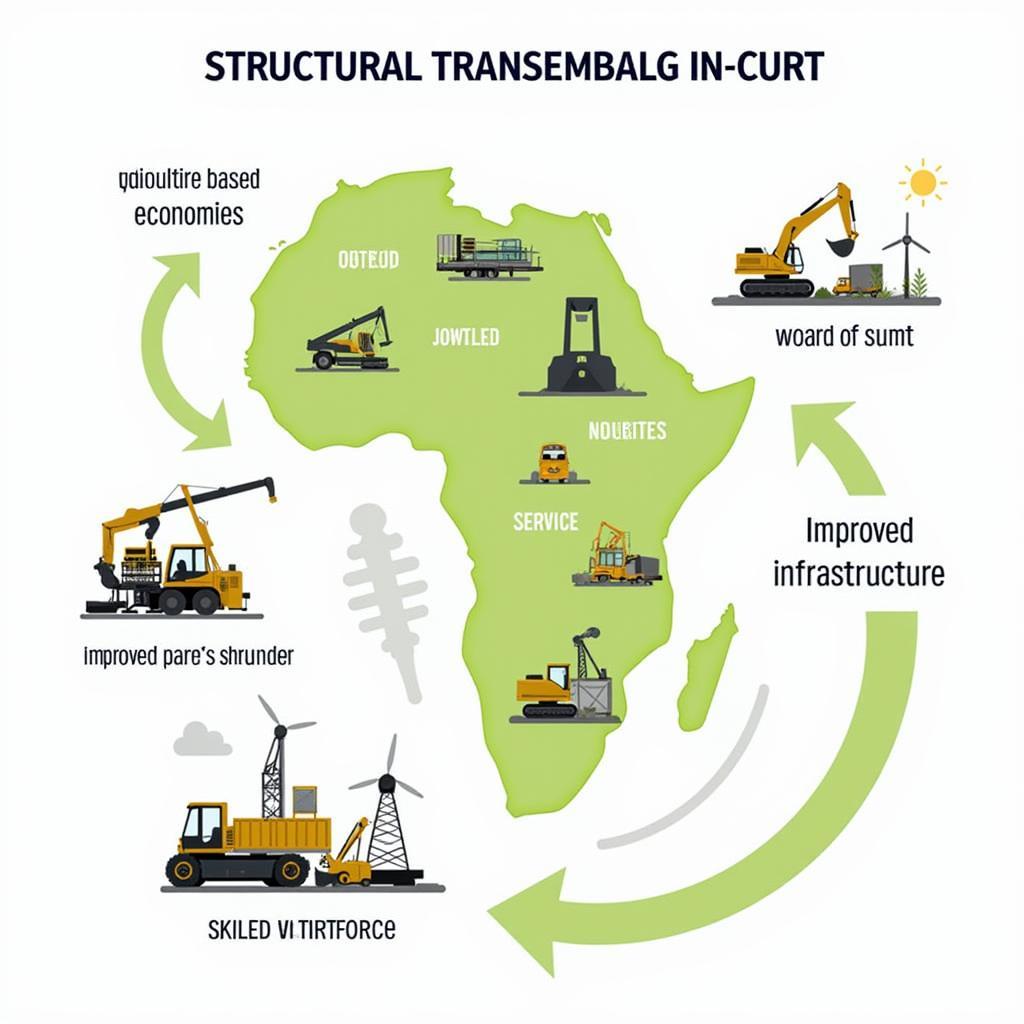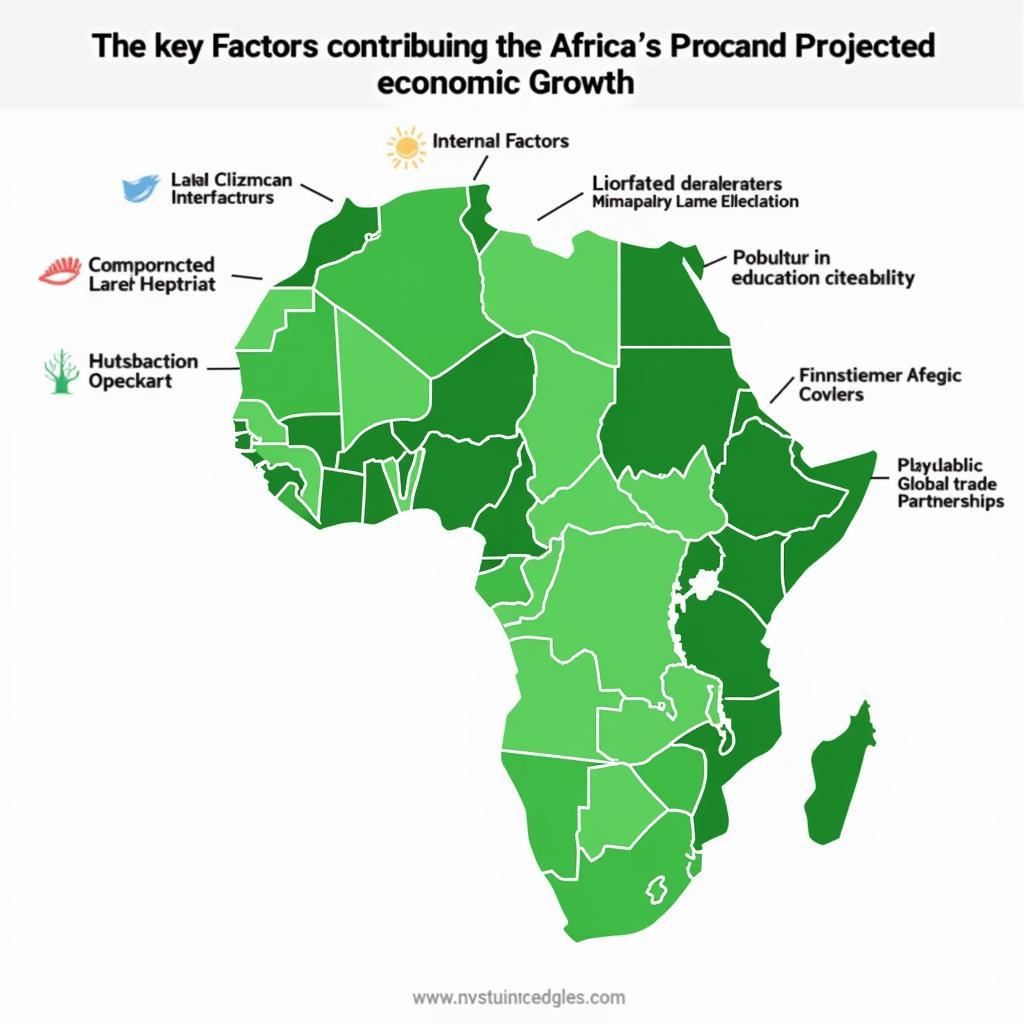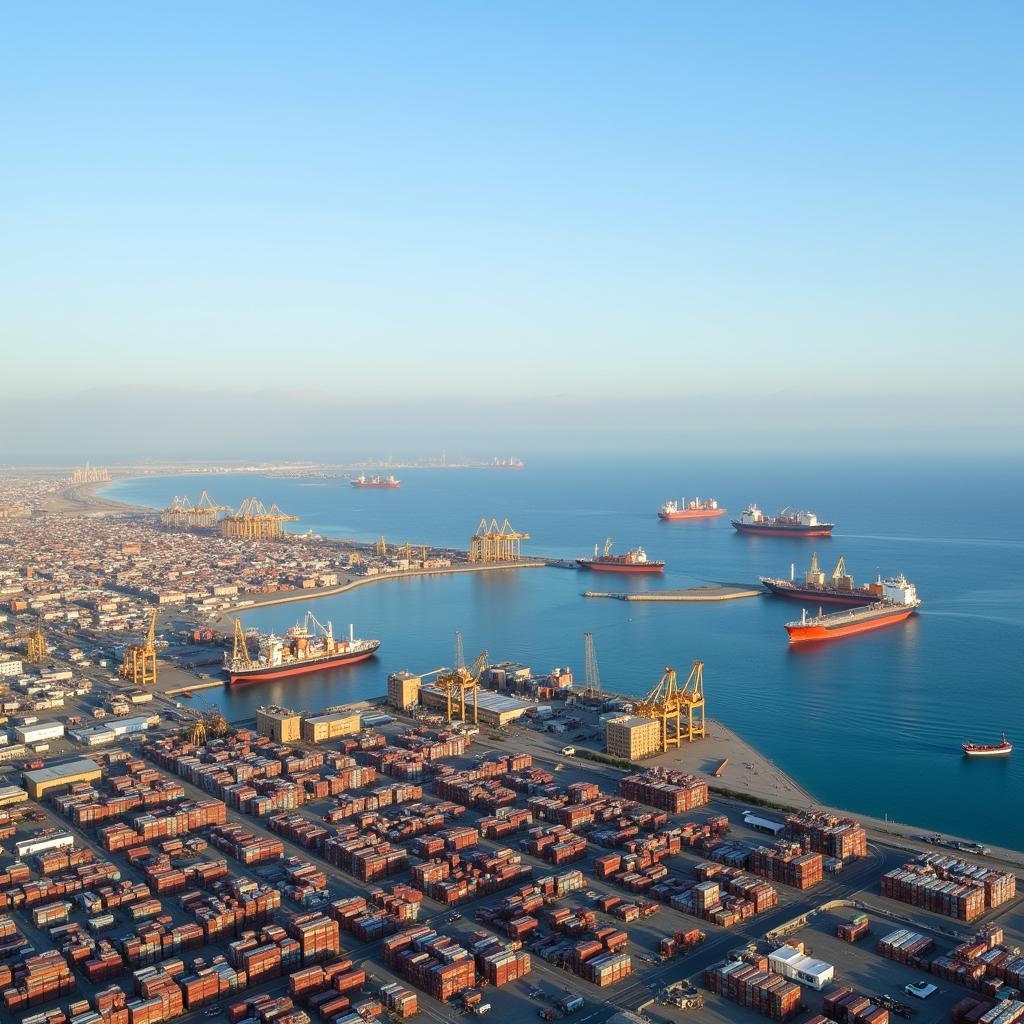African Development Outlook 2017: A Focus on Structural Transformation
The African Development Outlook 2017 provided a comprehensive analysis of the continent’s economic performance and prospects. The report, themed “Structural Transformation for Inclusive Growth,” emphasized the importance of moving beyond traditional sectors and embracing diversification, industrialization, and value addition to achieve sustainable and equitable development.
Understanding Africa’s Development Needs
The African Development Outlook 2017 highlighted the need for structural transformation as a key driver of inclusive growth in Africa. This transformation involves shifting from dependence on natural resources to more diversified economies driven by industry and services.
 Structural Transformation in Africa
Structural Transformation in Africa
Several factors underscore the urgency of this transformation. Firstly, the global landscape is evolving rapidly, with technological advancements, climate change, and shifting geopolitical dynamics demanding adaptability and innovation. Secondly, Africa’s young and growing population necessitates the creation of sufficient job opportunities, which traditional sectors alone cannot provide.
Key Findings of the African Development Outlook 2017
The African Development Outlook 2017 presented several key findings that shaped the development discourse on Africa:
- Economic Growth: While Africa’s overall economic growth had slowed down in 2016 due to global headwinds, the report projected a rebound in the medium term, with an average growth rate of 3.4% in 2017 and 4.3% in 2018. This growth was contingent upon a number of factors, including improved commodity prices, enhanced infrastructure, and increased investment.
- Structural Transformation: The report underscored the slow pace of structural transformation in many African countries, emphasizing the need to diversify economies, promote industrialization, and move up the value chain.
- Inclusiveness: Despite progress in poverty reduction, inequality remained a significant challenge, with many Africans still excluded from the benefits of economic growth. The report stressed the importance of inclusive growth that benefits all segments of society, particularly women and youth.
 Factors Influencing African Economic Growth
Factors Influencing African Economic Growth
“For Africa to truly harness its potential, it’s not enough to simply experience economic growth. That growth must translate into tangible improvements in the lives of everyday people,” notes Dr. Amina Osman, a leading economist specializing in African development. “This means investing in education, healthcare, and social safety nets that uplift the most vulnerable.”
The Role of Industrialization in Africa’s Transformation
Industrialization emerged as a central theme within the African Development Outlook 2017. The report argued that developing a robust industrial sector is crucial for:
- Job Creation: Industries have the potential to generate large-scale employment opportunities for Africa’s burgeoning youth population.
- Value Addition: Transforming raw materials into finished goods within Africa allows countries to capture more value from their resources and enhance export competitiveness.
- Technological Advancement: Industrialization often goes hand-in-hand with technological innovation, driving productivity gains and economic diversification.
The report recommended policies to support industrialization, including investments in infrastructure, skills development, and a conducive business environment. It also stressed the importance of regional integration to expand market access for African businesses.
Challenges and Opportunities for African Development
The African Development Outlook 2017 acknowledged the numerous challenges hindering Africa’s development trajectory:
- Infrastructure Gap: Inadequate infrastructure, including roads, energy, and ICT, continues to impede economic activity and increase the cost of doing business.
- Skills Mismatch: A mismatch between the skills possessed by the workforce and those demanded by the labor market hinders productivity and innovation.
- Climate Change: Africa is particularly vulnerable to the impacts of climate change, including droughts, floods, and rising sea levels, which threaten livelihoods and economic progress.
- Governance and Institutions: Weak governance, corruption, and institutional inefficiencies undermine the rule of law and deter investment.
Despite these challenges, the report maintained an optimistic outlook, highlighting significant opportunities for progress. These opportunities included:
- Demographic Dividend: Africa’s young and growing population, if equipped with the right skills and opportunities, has the potential to drive economic growth and innovation.
- Abundant Resources: The continent possesses vast natural resources, presenting opportunities for economic diversification and value addition.
- Technological Leapfrogging: Africa has the potential to leverage technology to accelerate its development, particularly in areas such as mobile banking, renewable energy, and precision agriculture.
Conclusion: A Call to Action for Structural Transformation
The African Development Outlook 2017 provided a nuanced analysis of Africa’s development landscape, emphasizing the pivotal role of structural transformation in achieving inclusive and sustainable growth. It recognized the significant progress made while acknowledging the persistent challenges that need to be addressed. The report served as a call to action for African governments, policymakers, development partners, and citizens to prioritize policies and investments that promote economic diversification, industrialization, job creation, and shared prosperity. By embracing structural transformation, Africa can unlock its vast potential and secure a brighter future for all its people.
FAQ: Addressing Key Questions about the African Development Outlook 2017
1. What is the main message of the African Development Outlook 2017?
The report emphasizes that structural transformation, shifting from reliance on natural resources to diversified economies driven by industry and services, is crucial for achieving inclusive growth in Africa.
2. What are some of the key challenges to Africa’s development highlighted in the report?
The report identifies challenges such as inadequate infrastructure, skills mismatches in the labor market, vulnerability to climate change, and governance issues as obstacles to development.
3. What opportunities for growth does the African Development Outlook 2017 identify?
The report highlights opportunities such as harnessing the potential of Africa’s youthful population, leveraging the continent’s abundant natural resources, and capitalizing on technological advancements to drive progress.
4. What is the role of industrialization in Africa’s development according to the report?
Industrialization is presented as vital for job creation, adding value to raw materials, driving technological advancement, and fostering economic diversification.
5. What is the significance of the African Development Outlook 2017?
The report serves as a crucial tool for shaping development policies, guiding investments, and fostering dialogue among stakeholders on how to achieve inclusive and sustainable growth in Africa.
Looking for more insights on Africa’s economic landscape? Explore our articles on the African diamond business and the african countries with highest gdp for a deeper understanding. You can also delve into specific data points by reviewing the african countries gdp per capita 2017.
Need assistance or have questions?
Contact us at:
Phone Number: +255768904061
Email: kaka.mag@gmail.com
Or visit us at:
Mbarali DC Mawindi, Kangaga, Tanzania.
Our customer service team is available 24/7.


